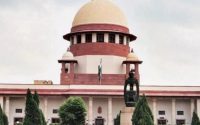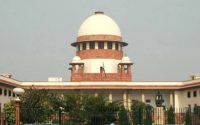$100 Website Offer
Get your personal website + domain for just $100.
Limited Time Offer!
Claim Your Website NowMaharashtra: SC decision to delay floor test goes against its own precedent in Goa and Karnataka.
Source – scroll.in
The Supreme Court on Monday reserved its orders in the Maharashtra government formation case, in which the Opposition sought an immediate floor test to determine the strength of the Bharatiya Janata Party government in the state assembly. The court will deliver the order at 10.30 am on Tuesday.
On Monday, Solicitor General of India Tushar Mehta, as per the court’s directions on Sunday, produced the Maharashtra governor’s letter inviting Devendra Fadnavis of the Bharatiya Janata Party to form the government as also the letter of support that dissident Nationalist Congress Party leader Ajit Pawar had showed the governor.
The Fadnavis government had taken over on Saturday morning as the state of President’s rule that was in place in Maharashtra was lifted overnight.
Fadnavis’s swearing in came after a curious series of events that has played out since the results of the state assembly election results were announced on October 24. The BJP came through as the single-largest party with 105 seats in the 288-member assembly. But no outfit had a clear majority. The Shiv Sena won 56 seats, the Nationalist Congress Party 54 seats, and the Congress 44 seats.
Alliance crumbles
Though the BJP had fought the campaign in an alliance with the Sena, its coalition partner in the previous government, the two soon had a disagreement about how power would be shared in the new dispensation.
On November 12, with no party being able to form the government, President’s rule was imposed.
As the Sena and BJP argued, a curious coalition seemed to be emerging: the Sena seemed like it would be the lead partner in a government that would include the National Congress Party and the Congress. For several days, these three parties were involved in discussions about how they would share power and also attempted to reconcile their diverse ideological positions. On Friday, they seemed ready to announce that they would form a government with Sena chief, Uddhav Thackeray, as chief minister.
But on Saturday, President’s rule was lifted at 5.47 am. Shortly after, Fadnavis took charge with Ajit Pawar’s backing. However, the Nationalist Congress Party asserted that Ajit Pawar does not have the support of the party. He was removed as the legislative party leader on Saturday.
The NCP, the Sena and Congress moved court against the Fadvanvis goverment,
On Monday, Solicitor General Tushar Mehta argued that the governor had applied his mind properly when inviting Fadnavis to form the government. He produced the letter submitted by Ajit Pawar to the governor and stated that it had the signatures of 54 Nationalist Congress Party legislators. Lawyer Maninder Singh, who appeared for Ajit Pawar, added that he was the leader of the NCP legislative party when the letter was given to the governor, which meant that for legal purposes he was the NCP.
Lawyers Kapil Sibal who appeared for the Shiv Sena and Abhishek Manu Singhv, who appeared for the NCP , emphasised the need for an immediate floor test. They asked why the BJP was shying away from proving its majority in the assembly when it was sure of the numbers. They produced affidavits that they claimed showed the support of 154 MLAs for the three-party alliance.
Floor test and precedent
As this writer noted in a previous piece, the only possible way out of the political mess in Maharashtra is for a floor test to be conducted to determine if the Fadnavis government does actually have a majority.
However, the Supreme Court, after hearing the arguments, chose to reserve its orders and adjourn the matter to Tuesday. This was in contrast to the manner the court handled two similar situations in the recent past: in Goa and in Karnataka.
In 2017, following the Assembly elections in Goa, the Opposition moved the Supreme Court after the governor appointed BJP’s Manohar Parikkar as chief minister. The Congress argued that the BJP did not have the requisite numbers and that the Congress and other Opposition parties together had a better chance of providing a stable government. The governor ignored their claim.
In its order on March 14, 2017, the court observed that a floor test alone would clear the air. In a short paragraph, the court summed up its opinion.
In the Goa case, the court took up the matter on March 14 and passed the order the same day, giving the BJP 48 hours to prove majority in the state assembly.
In the Karnataka case in 2018, the Supreme Court followed the same method. It at for a rare pre-dawn hearing on a May 17, 2018. It called for some records the next day and then ordered for a floor test within 48 hours. This led to Chief Minister BS Yeddyurappa resigning without taking the confidence vote as the party could not muster the required numbers.
On Monday, however, the Supreme Court reserved orders in the Maharashtra case. If the court chooses to set a 48-hour deadline for the floor test as it did in the Karnataka and Goa cases, it would have given the BJP 72 hours to strengthen its numbers (if Monday is also counted).



